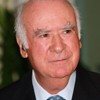HOPE Governors discuss their national Covid-19 programmes and delivery, and the consequences of the pandemic on somatic and mental healthcare provision to non-Covid patients.
Data were obtained from the OECD, Eurostat and WHO. When data were not available for one of the specific years, the closer year was used (denoted by *).
AUSTRIA

HOPE Governor
What were the consequences on the care delivered to non-Covid patients both on somatic and mental health?
Different virus variants (and corresponding protection measures), especially seasonal ones, led to different stress situations and requirements in the hospitals. In 2020, the general measures included putting lockdown into effect, to prevent the spread of infection, and implementation of a test system. Protection measures were implemented in hospitals. Additional hospital capacities were created for these unknown and un-assessable hospitalisation needs.
The Ministry commissioned a study on the impact of the pandemic on inpatient care in Austria in 2020. The results showed that in the areas analysed there was – with the exception of stroke – a reduction in inpatient stays in the months of March to May 2020 and in November and December 2020 compared with previous years, although the reduction during the second lockdown was not as significant. Due to sufficient PPE, more testing possibilities and increased knowledge about Covid-19 gleaned during the first phase of the pandemic, the reduction was comparatively moderate considering the considerable number of hospitalised Covid-19 patients.
The vaccination programme commenced in 2021. The Delta variant brought with it an increased risk of infection with a similar severe course of disease and hospitalisation requirements as before. This was the first time for an increased capacity utilisation with intensive care capacities regionally exceeding the utilisation limit. In all federal states, elective surgeries had to be reduced to some extent to enable adequate capacity for Covid-19 patients in intensive care units.
By 2022, the Omicron variant changed some of the framework conditions. Compared with Delta, the Omicron variant is more infectious, but the course of the disease is milder (also due to vaccination) although the targeted level of vaccinations could not be achieved. Nevertheless, the high number of cases resulted in a high rate of hospitalisation. This again led to increased capacity utilisation, mainly regarding normal care capacities. At the same time, incapacity to work and segregation led to staff absence.
A seasonal additional demand for different resources has not yet been considered by structural planning in the health care system. In addition to the physical availability of beds, the utilisation of normal and/or intensive care units, as well as sick or separated health care staff, are limiting factors. In addition to regular monitoring activities, structural-, organisational- and personnel-related measures must be taken to ensure appropriate capacities in hospitals (e.g. beds, staff, equipment, protective gear). Flexible deployment of staff and flexible use of capacities are central to this. Framework conditions at federal and state levels are also important. The main objective is to cope with the (at least to some extent) seasonal increase in demand for Covid supplies care while largely maintaining standard care.
Also, mental health is a big focus, because depression, anxiety disorders and other mental health problems were aggravated or increased during the pandemic. An advisory group of experts in the Ministry of Health works on necessary measures, also addressing the mental health of children and juveniles and the subsequent issues arising in these populations. Various measures to improve the supply of specialists for psychiatry and psychotherapeutic medicine and for child and adolescent psychiatry are being examined, and thereby being able to offer patients easy and accessible comprehensive and multidisciplinary care.
To achieve the best possible coverage of demand, both specialties have already been classified as shortage subjects, and in the field of child and adolescent psychiatry, the training key was expanded by law at the beginning of 2022 to be able to train more physicians in this specialty. Additional quality assurances must be implemented to accompany such measures. Also, social paediatric facilities and child and adolescent psychiatric networks are included in comprehensive care considerations.
BELGIUM

HOPE Governor
Covid-19 vaccination: how did it go, what was the involvement of hospital and healthcare services, adherence of healthcare staff?
In Belgium, 52% of the population have received the dose of the vaccine, producing a sharp decrease of infections during the past two months. There are only 1,000 people in hospital due to Covid-19 and 400 people in the ICU. The vaccination strategy is based on age and comorbidities and takes place mainly in vaccination centres. However, some hospitals are used for specialised vaccination, e.g. for oncology patients. The strategy challenges are mainly people not wanting to receive the vaccination and uncertainty. This varies among regions: vaccination willingness is high in Flanders and lower in Wallonia and Brussels.
What were the consequences on the care delivered to non-Covid patients both on somatic and mental health?
During the two first waves of Covid, impact on care delivered to non-Covid patients was significant, notably given legal restrictions on hospitals. For 2020 and 2021, hospitals’ main activities decreased by 10-20%. Teleconsultation partially replaced in-person care. More than 30% of the Belgian adult population received care by phone and/or online, which is significantly lower than the OECD average.
Covid had a huge impact on mental health. Nearly 20% of the total population declare symptoms of depression – an increase of 100% compared with the pre-Covid period.
BULGARIA

HOPE Governor
Covid-19 vaccination: how did it go, what was the involvement of hospital and healthcare services, adherence of healthcare staff?
Since the beginning of the pandemic, the total number of confirmed cases of coronavirus in Bulgaria is 1,253,934 (17.6% of the population), of which 1,207,195 (17% of the population) have been cured to date. Of these, the number of medics with proven coronavirus infection is 25,751 (38% of all). There are no data on the actual number of people who have become infected; it is assumed that the number is five-times more.
The number of deaths from Covid-19 as of 21 September 2022 was 37,694 (3% of confirmed cases and 0.53% of the population).
Currently, 1% of all available hospital beds, in a small number of hospitals, are engaged in the fight against the Covid pandemic.
The total number of doses of the Covid-19 vaccine administered was 4,540,537 (64% of the population). 2,071,300 people (29% of the population) were fully vaccinated.
As of 21 September 2022, 881,410 had received a booster dose, of which 72,704 had received a second booster.
Almost all hospitals have by now restored normal work practices and admission of patients.
However, the trend of increasing complicated medical cases in non-Covid patients due to untimely treatment or lack of treatment due to the pandemic continues. Cases of long-Covid are also increasing. Clinical pathways have been developed and are already being implemented for the rehabilitation of patients with long-Covid or with other complications due to a more severe Covid infection.
Research on the impact on the mental health of non-Covid patients has not been carried out in our country.
DENMARK

HOPE Governor
Covid-19 vaccination: how did it go, what was the involvement of hospital and healthcare services, adherence of healthcare staff?
In Denmark, there has been a great willingness to get vaccinated. By August 2022, 84% of the population over the age of five years had received the first dose and 77% of the population over the age of 18 years had received second and third doses. Citizens over the age of five years were previously invited to receive the first, second and third dose – this former vaccination programme has now been phased out and replaced by a new programme. If citizens do not receive the first three doses, they are still recommended to have them.
Based on previous experience, it is expected that Covid-19 will be a seasonal disease – we also know that the risk of a severe Covid-19 infection is higher in older age. In Autumn 2022, the vaccine will first be offered to residents of nursing homes and citizens over 85 years of age. For this group, it was available from 15 September 2022. Following this, the vaccine was offered to citizens over 50 years of age from 1 October 2022. Employees from the healthcare sector who have close contact with patients and citizens who are in risk of severe Covid-19 will be offered a booster vaccine from 1 October 2022. The vaccines offered are variant-updated versions of Pfizer and Moderna vaccines.
Citizens will be offered the vaccine via digital post, whereafter it will be possible to book a timeslot for the vaccination. Citizens will be able to get vaccinated at public vaccination centres, private vaccination centres and some general practitioners.
What were the consequences on the care delivered to non-Covid patients both on somatic and mental health?
The situation for other patients is, as in other EU countries, affected by delays. There is an agreement with the government to catch up on all the surgeries, but the work of reducing the delays is ongoing.
ESTONIA

HOPE President
Covid-19 vaccination: how did it go, what was the involvement of hospital and healthcare services, adherence of healthcare staff?
The vaccination target in Estonia at the beginning of 2021 was for 70% of adults to be fully vaccinated by the start of autumn. We did not reach that goal by autumn 2021, but in autumn 2022, 75.8% of adults and 65.2 % of the whole population are vaccinated. The vaccination programme started with healthcare workers and older people in care homes, but since May 2021, vaccination has been available for everyone. Health care staff has been willing to being vaccinated, which has resulted in a positive outcome of decreasing numbers of infections in staff. The support of health care workers was confirmed with the signing of national collective agreement in 2021 where it was stated that vaccinated workers receive additional vacation bonuses while non-vaccinated workers do not. Our vaccination plans are currently being renewed by the government to consider new vaccines.
What were the consequences on the care delivered to non-Covid patients both on somatic and mental health?
During different phases of the pandemic, there has been a need to postpone planned healthcare services for non-Covid patients. Medical departments and hospitals have been working overtime as much as possible to get these services back on track. But in doing so, the hospitals face difficulties not only with lack of staff but also with funding. There is a separate funding measure for Covid treatment in the Health Insurance Fund, and for 2023 there is also a separate budget planned to deal with the longer waiting times for planned care.
GERMANY

HOPE Governor
Covid-19 vaccination: how did it go, what was the involvement of hospital and healthcare services, adherence of healthcare staff?
When immunisation of the public began, vaccination was organised primarily based on six priority groups in vaccination centres, and later also in medical practices and pharmacies. In addition to vulnerable patient groups, vaccination was offered as early as possible to hospital personnel as one of the priority groups. The demand from hospital employees was generally very high. Batches of the vaccine for the vaccination centres were delivered directly to hospitals to allow vaccination of personnel on site.
Institutionally-related mandatory vaccination has been in place Germany since 16 March 2022. This stipulates that those persons employed in hospitals that had not submitted proof of vaccination or recovery by 15 March 2022, and that are not subject to any medical contraindication for a Covid-19 vaccine, were to be reported by the hospitals to the competent public health authority. This measure was founded on the grounds of protection of patients from others in order to reduce transmission frequency by specialised staff and was to serve as the precursor for general mandatory vaccination of the public. The attempt to introduce mandatory vaccination for the public failed in April 2022. An important argument for rejecting general mandatory vaccination was that it would not necessarily prevent transmission. Against this backdrop, institutionally-related mandatory vaccination has also become the focus of attention of a politically controversial discussion.
A questionnaire undertaken by the German Hospital Institute in March 2022 shows that, on 23 March 2022, 94% of hospital employees were fully vaccinated or recovered. According to occupational groups, the average reporting rate in the nursing service (7%) was somewhat higher than for doctors (3%).
As of 2 September 2022, 77.9% of the public had received primary immunisation and 62% an additional booster vaccination; 8.7% have already received a second booster vaccination. There is no approved vaccine available for four million of the 18 million unvaccinated, partly due to age (predominantly children are affected) or intrapersonal factors, such as a disability or other pre-existing medical conditions and predispositions (e.g. rare coagulation disorders).
What were the consequences on the care delivered to non-Covid patients both on somatic and mental health?
Beds in German hospitals were kept free to ensure sufficient capacity available for the care of coronavirus patients, and planned treatments were postponed. According to the Federal Statistical Office, it is to be assumed that, in addition to this, many people have also delayed essential hospitalisation, partly also in order not to overburden the healthcare system. The number of treatment cases and bed occupancy rate in 2021 remain under the pre-pandemic level. The number of treatment cases fell from 19.4 million in 2019 to 16.7 million in 2021. Bed occupancy decreased from 77.2% to 68.0%. As these changes have serious repercussions on the financing related to the German Radiological Society (DRG) of hospital services, the publicly led debate on financial relief measures from policy makers to secure patient care is ongoing.
LUXEMBOURG

HOPE Governor
What were the consequences on the care delivered to non-Covid patients both on somatic and mental health and strategy to avoid having to reschedule hospital care?
The right to protection of one’s health is a right that every citizen can claim from the state as a subject of rights. The state is therefore obliged to manage its health system in such a way that situations leading to non-treatment or insufficient treatment are avoided.
Concerning the impact on the care of non-Covid patients, there have not been many issues so far, except for mental healthcare, but this is an established problem as there are not enough psychiatric centres. Covid-19 counselling centres have been closed and the general practitioners are the points of contact. There was also a two-way stream implemented in emergency services for Covid-19 patients and for non-Covid-19 patients.
Generally speaking, the number of hospitalisations remained stable and did not increase alarmingly, and the situation of the health system in the Grand Duchy of Luxembourg was not overloaded due to Covid-19 hospitalisations, both during the Delta and Omicron periods.
With uncertainties for the future, a group of experts convened by the government recommended the introduction of a partial vaccination obligation that applies to people over the age of 50 (residents). Partial vaccination is therefore intended to be risk-targeted and would concern only a fraction of the general population. The primary objectives are the maintenance of a fully functioning health system for Covid and non-Covid patients, the protection of the vulnerable and a normalisation of life for most citizens.
Some particular features of Luxembourg (a very open society, high mobility of the population, a very high number of cross-border workers) make it unfeasible to contain the circulation of the virus at the level of the whole society. Therefore, the main purpose of compulsory vaccination is to protect the health services, and in particular hospitals (intensive care and normal care), to ensure normal functioning.
Hospital beds and hospital staff workload are at the forefront of the debate on partial and sectoral vaccination. The acceptable burden on intensive care units, hospitals, society and the economy must be decided at the political level and ultimately by society as a whole. However, from the hospitals’ point of view, the critical level, which corresponds to 38 intensive care beds and 138 normal care beds occupied by Covid-19 patients, is declared when there is a need to cancel clinical interventions.
The age threshold proposed by the experts is 50 years because older age is associated with a risk of severe Covid complications and the risk factors and co-morbidities that predispose to severe Covid are also more frequent from the age of 50 onwards.
However, a sectoral vaccination requirement for the health and care sectors would only be recommended in the case of a highly virulent variant. Even then, vaccination should provide at least 50% protection against infection and transmission. All things considered; this is unlikely with current vaccines. Therefore, the majority of the expert group considers that a sectoral vaccination obligation cannot be recommended at this time.
It is therefore strongly recommended that the vaccination status – even independently of SARS-CoV-2 – should be subject to special regulations governing the responsibilities of persons working in the health and care sectors towards care recipients. This would include the obligation to disclose one’s vaccination status.
At present, only a draft law on compulsory vaccination has been timetabled with the proviso that it will only be finalised if the health situation worsens to such an extent that no other outcome is possible.
PORTUGAL

HOPE Governor
What were the consequences on the care delivered to non-Covid patients both on somatic and mental health?
According to the Portuguese Central Administration of the Health System (ACSS) data, primary and hospital healthcare activity in the National Health Service (Serviço Nacional de Saúde – SNS) registered a significant recovery up to the end of February 2022.
In the first two months of 2022, 40.4% more surgeries were performed compared with 2021. The median waiting time on the surgical waiting list was 3.1 months at the end of February, which corresponds to a 24.8% reduction compared with 2021.
SNS hospitals carried out 15.6% more medical appointments compared to the same period in 2021, which is still in line with the values recorded in the same period of 2020 and 2019.
The data also indicate that emergency episodes recorded up to February, were above (55.2%) that of 2021 but still below (-19%) the pre-pandemic figures.
In primary healthcare there were around 5.3% fewer medical appointments than in 2021 but 10.4% more than in 2020. Of this total, 43.3% of medical appointments were face-to-face, which corresponds to a 38.4% increase over the same period in 2021.
SWEDEN

HOPE Governor
Covid-19 vaccination: how did it go, what was the involvement of hospital and healthcare services, adherence of healthcare staff?
In Sweden, vaccination is always voluntary and the willingness to get vaccinated is generally high. By September 2022, 87% of all residents aged 12 and over had received at least one dose and 85% had received two doses of vaccine. A total of 67% of all residents aged 18 and over had even received a third dose. The rate of vaccination is higher among elderly people, as this age group has been given priority. In February 2022, elderly people were recommended to take a fourth dose, and by September 2022 approximately 76% of all residents aged 65 and over had received four doses. In August 2022, the Public Health Agency of Sweden recommended that everyone aged 65 and over, and persons aged 18 and over belonging to any of the risk groups, take a booster dose.
Statistics shows that the vaccination rate is much higher among healthcare staff compared with other persons of working age.
In Sweden, individual regions are responsible for vaccinations. Vaccination for Covid-19 has taken place in many different settings, often in temporary premises or drive-in centres, but also in primary care centres and hospitals.
What were the consequences on the care delivered to non-Covid patients both on somatic and mental health?
The Covid-19 pandemic has had many different effects on the Swedish healthcare services. Before the pandemic, Sweden had a low number of ICU beds, but in the Spring of 2020, hospitals managed to quickly transform wards into ICUs, and transfer healthcare professionals from one part of the system to another. There was also a significant increase of digital services.
At the same time, there was initially less pressure on other parts of hospital services (cardiology, oncology) and less pressure on primary care. Planned treatment was postponed and waiting times were extended. Between March 2020 and January 2021, the total number of surgeries decreased by 22% compared to the same period in 2019/20. The number of planned surgeries decreased by 30%. The largest decreases in the total number of surgeries/interventions occurred in orthopaedics, general surgery and ophthalmology.
Although many people still fall ill with Covid, there are now (as of September 2022) significantly fewer people who need hospital care. Apart from a peak in the beginning of 2022 when the regions once again had to postpone planned treatments, the hospitals are trying to reduce the backlog for surgery from 2021. A problem then is the lack of qualified healthcare staff, such as specialist nurses.
UNITED KINGDOM

HOPE Governor
Covid-19 vaccination: how did it go, what was the involvement of hospital and healthcare services, adherence of healthcare staff?
The UK has now vaccinated 45 million people (93.2% of the population aged 12+); 42 million had a second dose (87.2%), and 33 million had a booster dose (68.7%). A fourth dose was offered this Spring to people aged over 75, adult care home residents, and individuals aged 12 and over who are immunosuppressed.
In early 2022, it had been intended to mandate vaccination as a condition of deployment for healthcare workers. However, on 31 January 2022, amidst concerns about the impact on capacity, and views that the staff vaccination rate was high, the Government revoked this imminent requirement, and this policy remains. Local leaders continue to encourage vaccine uptake at a local level.
The UK has experienced three major Covid-19 waves in 2022 and anticipates a particularly significant one in autumn/winter 2022. This will likely occur alongside seasonal flu. As such, plans are underway for vaccination for both infections. The NHS recommends that Covid, flu, and pneumococcal vaccines should be promoted and given together wherever possible, especially where this might improve uptake. The autumn booster programme is expected to include all adults over age 65, care home residents and staff, clinically vulnerable adults aged 16-64, and frontline social care and health workers, to maintain their protection over the winter against severe Covid-19, reducing hospitalisation and death over this period.
What were the consequences on the care delivered to non-Covid patients both on somatic and mental health?
In England, there are currently about 6.5 million people awaiting NHS care, as well as significant pressure on urgent and emergency care. Significant progress has been made, but the waiting list for physical and mental health care does continue to grow. Progress has focused on eliminating the 104+ week waiting list by July 2022 with good results. The aim to deliver around 30% more elective activity by 2024/25 than before the pandemic is intended to address backlogs, but there is a range of capacity challenges, including ongoing Covid-19 waves, staff sickness, staff vacancies, and patient flow issues.
Our summary of progress against recovery targets in England up to the end of June 2022 can be found via the NHS Confederation website.










